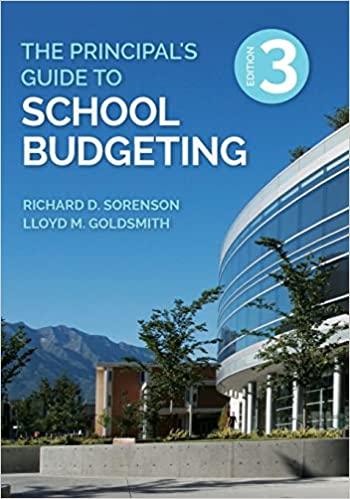Answered step by step
Verified Expert Solution
Question
1 Approved Answer
Year Revenues Operating Cost Less Depreciation EBIT Less Taxes Net Income 0 1 -$350,000 -$150,000 2 -$450,000 -$150,000 3 -$450,000 -$150,000 4 -$350,000 -$150,000 5

| Year | Revenues | Operating Cost | Less Depreciation | EBIT | Less Taxes | Net Income |
| 0 | ||||||
| 1 | -$350,000 | -$150,000 | ||||
| 2 | -$450,000 | -$150,000 | ||||
| 3 | -$450,000 | -$150,000 | ||||
| 4 | -$350,000 | -$150,000 | ||||
| 5 | -$300,000 | -$150,000 |
| Year | Original Cost | Net Income | Plus Depreciation | Plus External | Change in NWC | After-tax salvage | Net Cash Flow |
| 0 | -$750,000 | -$20,000 | |||||
| 1 | $25,000 | ||||||
| 2 | $25,000 | ||||||
| 3 | $25,000 | ||||||
| 4 | $25,000 | ||||||
| 5 | $25,000 | $20,000 | $60,000 |
Your company is considering an expansion into a new product area. The company has collected the following information about the proposed product. (Note: You may or may not need to use all of this information, use only the information that is relevant.) - The project has an anticipated economic life of 5 years. - The company will have to purchase a new machine to produce the product. The machine has an up-front cost (T=0) of $750,000. The machine will be depreciated on a straight-line basis over 5 years (that is, the company's depreciation expense will be $150,000 in each of the first five years (T=1,2,3,4, and 5). The company anticipates that the machine will last for at least five years, and that after five years, its before-tax salvage value will equal $100,000. - If the company goes ahead with the project, it will have an effect on the company's net working capital. At the outset, T=0, inventory will increase by $50,000 and accounts payable will increase by $30,000. At T=5, the net working capital will be recovered after the project is completed. - The project is expected to produce EBIT of $200,000 the first year (T=1), $300,000 the second and third years (T=2 and 3),$200,000 the fourth year (T= 4), and $150,000 the final year (T=5). These values already include operating costs that are expected to equal 50 percent of sales revenue and depreciation expense. - The company's interest expense each year will be $80,000. - Because of synergies, the new project is expected to increase the after-tax cash flows of the company's existing products by $25,000 a year (T=1,2,3,4, and 5) and this is considered to be incremental to this particular project. - The company's overall WACC is 12 percent. However, the proposed project is less risky than the average project, leading the firm to use a WACC of 10 percent for this project. - The company's tax rate is 40 percent. What are the NPV and the IRR for this project? Sample tables (with some data provided) are given to help you arrange the data
Step by Step Solution
There are 3 Steps involved in it
Step: 1

Get Instant Access to Expert-Tailored Solutions
See step-by-step solutions with expert insights and AI powered tools for academic success
Step: 2

Step: 3

Ace Your Homework with AI
Get the answers you need in no time with our AI-driven, step-by-step assistance
Get Started


